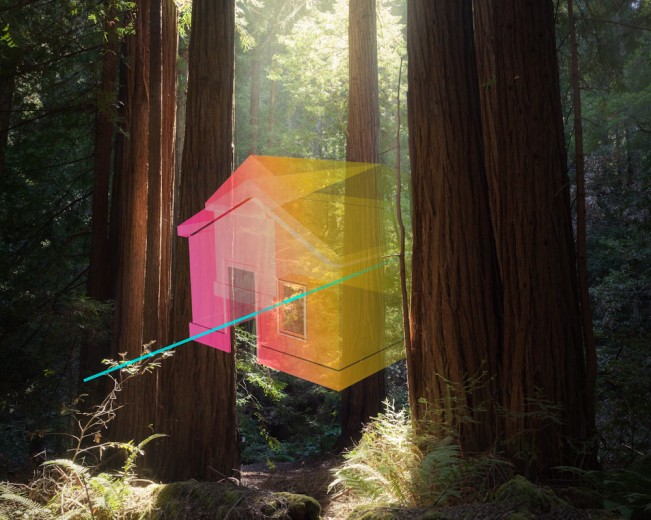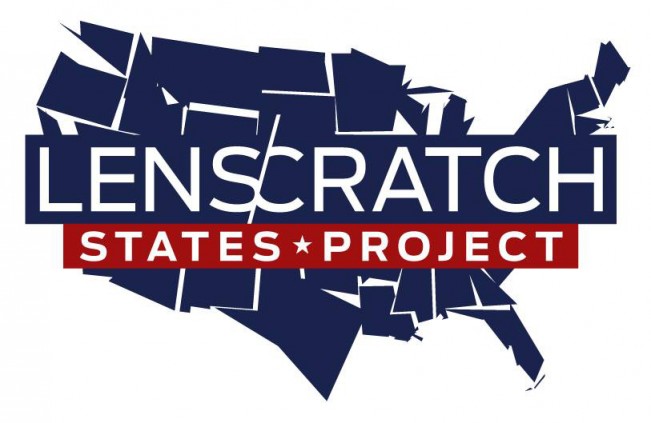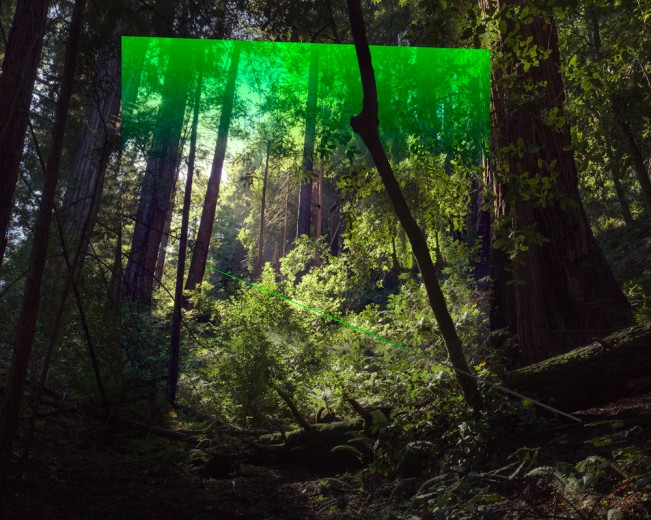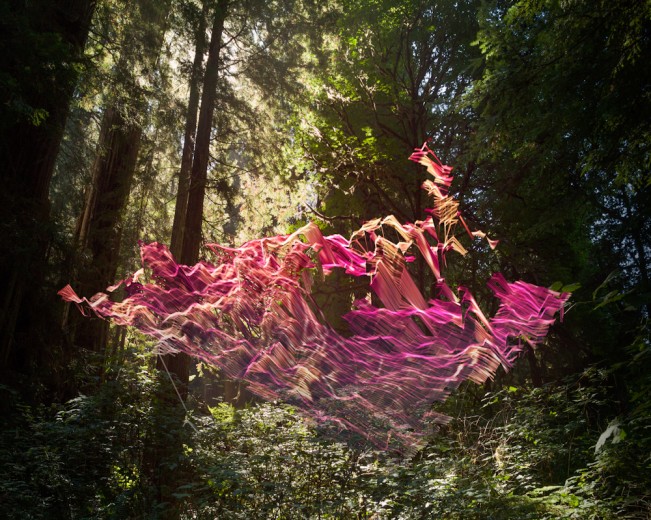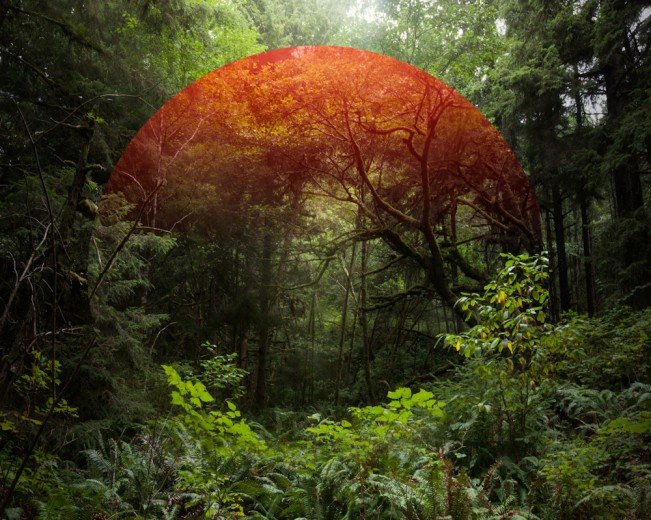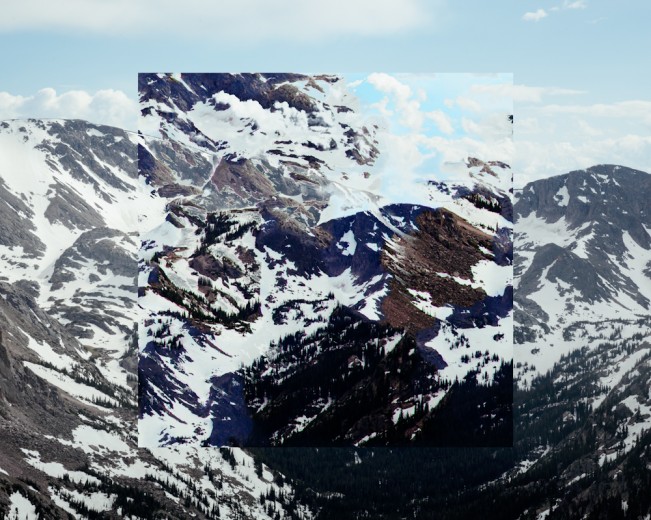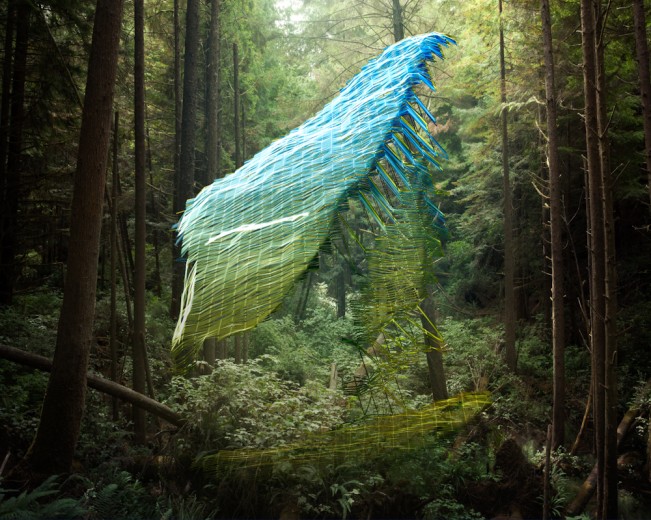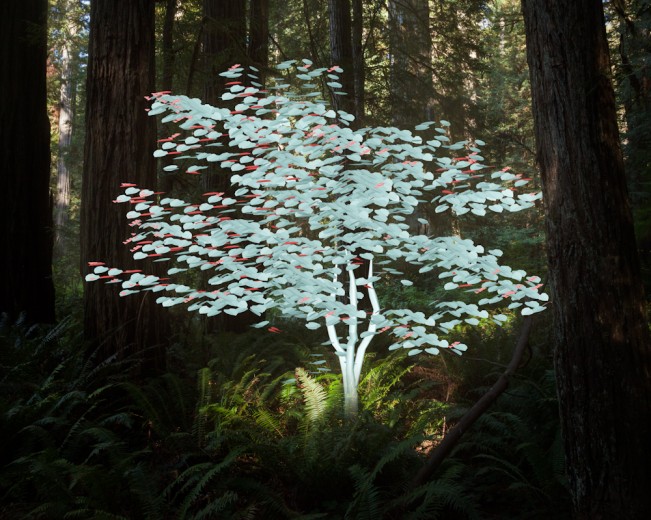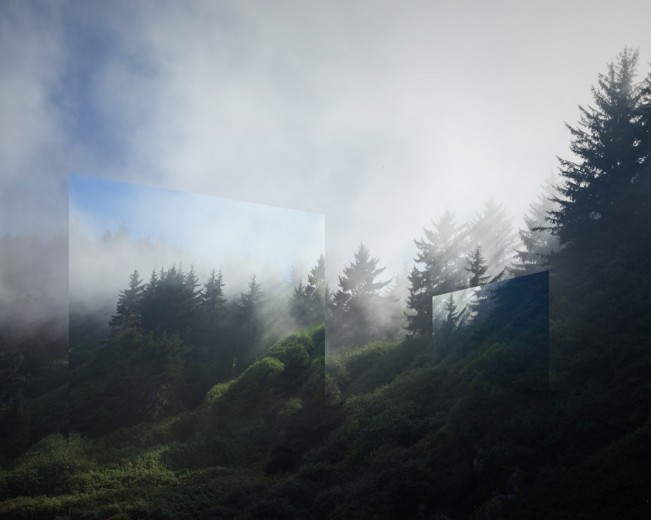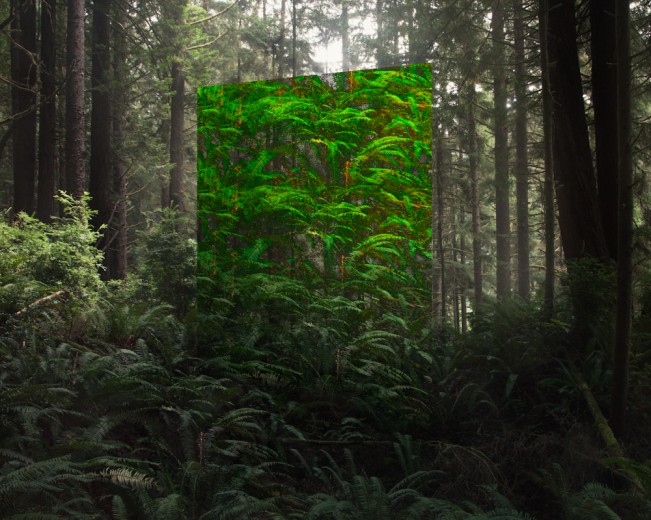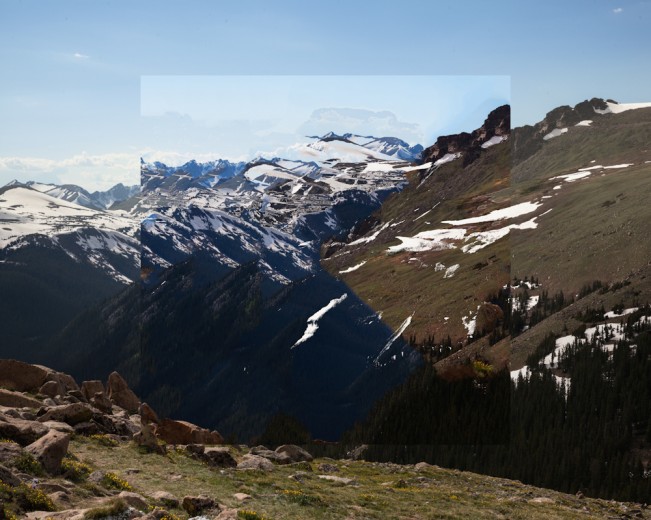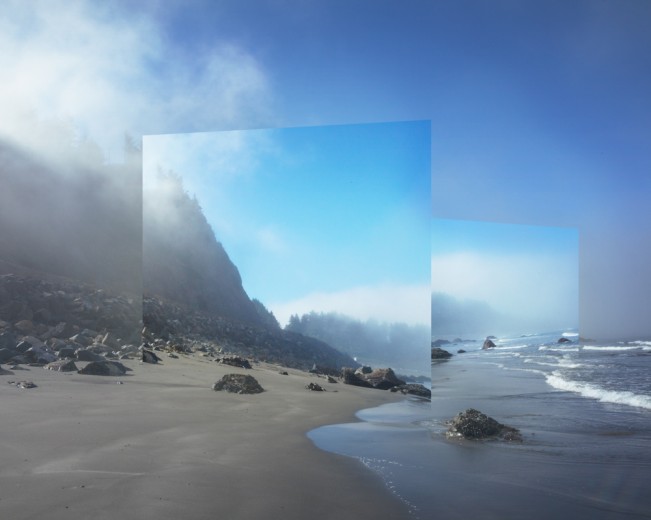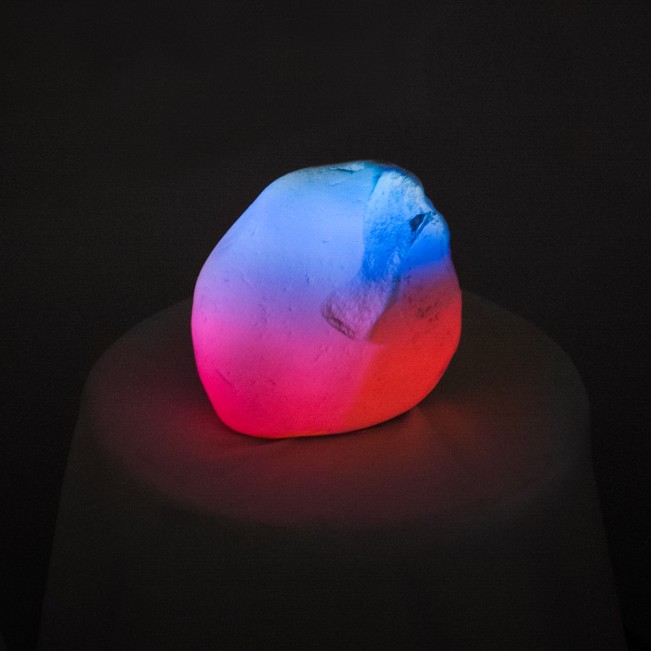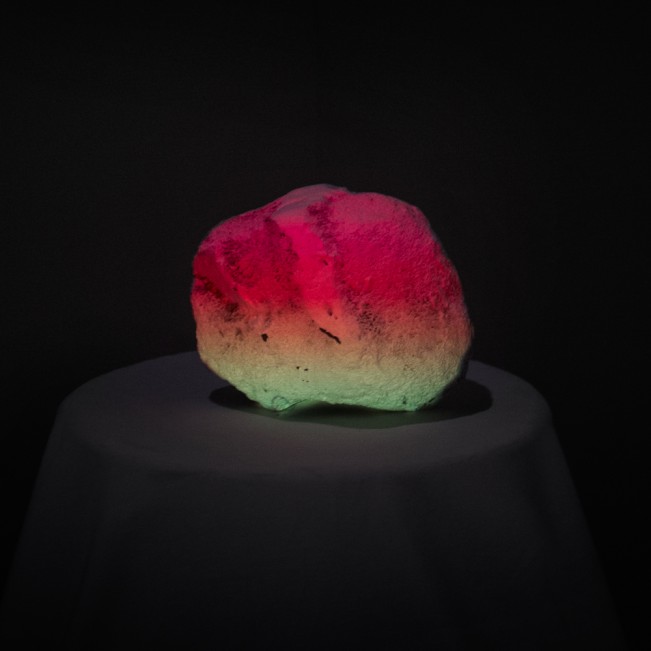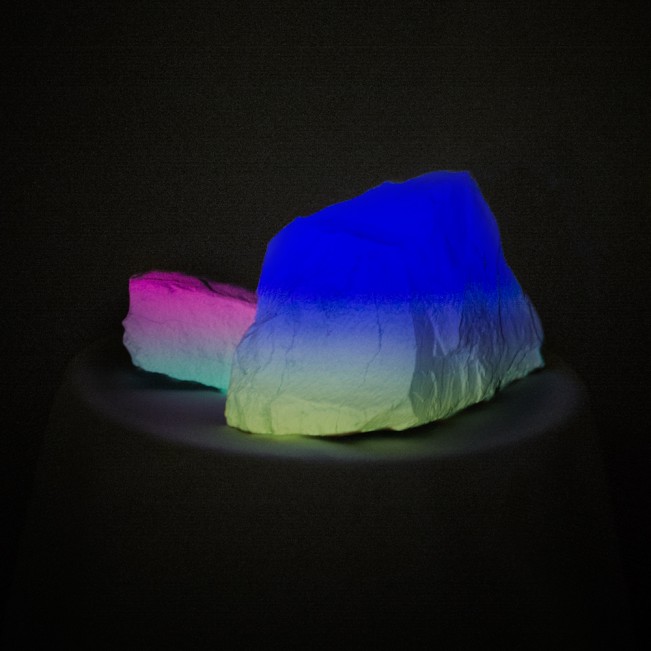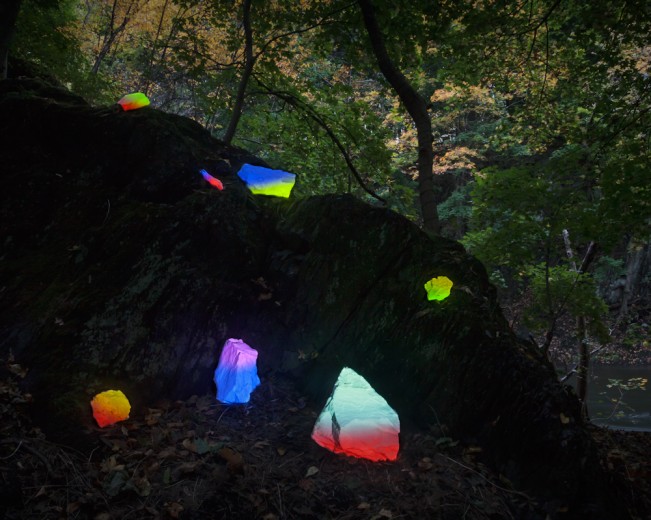Mark Dorf: The States Project: New York
This week Lenscratch is handing over the reins to New York photographer Mark Dorf as part of The States Project. Mark, a veteran of sorts here at Lenscratch, is based out in Brooklyn and is in the heart of the art scene. To kick off the week, I am sharing Mark’s series //_PATH, and we discuss the importance of location, history, and where he sees his work moving towards.
Mark Dorf grew up in Louisville, Kentucky and graduated from The Savannah College of Art and Design with a B.F.A in Photography and Sculpture. Employing a mix of photography and digital media, Dorf’s work explores the post-analogue experience – society’s interactions with the digital world and its relationship to our natural origins. Dorf scrutinizes the influence of the information age, and explores his theme through a combination of photography and digital media, examining in his most recent works how we encounter, translate, and understand our surroundings through the filter of science, math and technology. Mark seeks to understand our curious habitation of the 21st-century world through the juxtaposition of nature and the digital domain.
Dorf has exhibited internationally including at Outlet Gallery, Brooklyn, 2015; The Lima Museum of Contemporary Art, Lima, 2014; Mobile World Centre, Barcelona, 2014; Harbor Gallery, New York, 2014; SCAD Museum of Art, Savannah, 2013; and Phoenix Gallery, New York, 2012. Dorf’s work is included in the Savannah College of Art and Design permanent collection.
Mark Dorf lives and works in Brooklyn, New York.
Mark shares his perspective of being a New York photographer:
While I won’t argue that New York City is the center of the universe, because it’s not, one simply can’t deny the amazing communities of creative people that reside here. Currently I am based out of Brooklyn, NY, but I used to live in the Hudson Valley, and to no surprise I was still surrounded by incredible creative people: craftsman of all kinds, photographers, painters, sculptors, conceptual artists, all together and working critically amongst one another. It is this diversity that I have come to love and find so inspiring.
The artists that I will highlight in the coming week embrace this diversity and cross-pollination amongst mediums. Few of these artists would consider themselves “photographers” in the traditional sense of the word. Rather, most of these artists look at photography and imagery as a tool within a wide palette of visual and special vocabulary that expands beyond the lens. While it may be a different flavor than you’re used to, I am truly excited to share these artists work with the community.
//_PATH
When examining our daily contemporary lives in western culture, one finds that there is barely a single situation that is not influenced by digital technology and communication through the World Wide Web – the Internet and digital technology has been integrated into nearly every part of our lives and will only continue to become more and more present in our daily routines. I specifically find interest in the ways in which we have become dependent upon this technology to help aid us in our navigation of our every day and how it affects our perception of the world around us all socially, emotionally, and physically – it is no longer about logging on or off, but rather living within and creating harmony with the realms and constructs of the internet for our newest generation of inhabitants.
//_PATH explores these ideas through digital photography, collage, 3D rendering, and primitive 3D scanning technology. Within the images, I focus on using strict geometric and synthetic form to contrast against the landscape in which they are manifested; a comparison of language. The natural landscape can be seen as the most ancient of symbolic languages: it is the original set of symbols that birthed all of modern language; it is the original text. Focusing on the landscape and our modern digital language, I seek to understand our aggressive capture and digitization of our surroundings through very basic use of pure color and the native tools of contemporary digital imaging that we use to create meaning and manipulation in mass media.
The different environments that I have lived in have certainly affected the ways in which I work as well as the subject matters that I explore. When living in the Hudson Valley, I was just ten minutes from the Catskills so I had a landscape that I could work with right at my fingertips. Being so close to the mountains I became very intimately connected with the area — I could casually spend time in nature without the pressure of making a whole trip with the specific goal in mind of creating work. It was easy to let things fall into place in a logical and relaxed progression. Also when living up there I was working in a fabrication shop, so I had access to an entire wood and metal show which allowed for me to have tools to create physical objects that helped me to sketch out ideas in a totally different way. I would often make small sculptural works that helped to inform the photographic/digital compositions that I made later.
Since I have moved to Brooklyn, this has obviously changed. I don’t have the space or immense tool box to create these objects physically anymore which led me to an exploration in virtual digital space. After moving here, I began to play a lot with 3D rendering and technology. It was something I could do in my small studio that didn’t require any physical space other than my desktop computer. What was interesting about this switch though was that this was not a replacement of a previous process, creating sculptural works to inform the photographic, but rather an augment of my process. 3D virtual space is totally and completely different — there are literally no restrictions except for those that make the 3D vocabulary and the processing power of your computer. Through this, I was able to escape all restrictions having to do with space, physics and budget. Eventually this 3D and digital process of course then started seeping into my more critical photographic and digital practice. People are often confused as to why I live in Brooklyn when I shoot mostly landscape-based work, but the truth of the matter is that the work I am making now is less about the canon of landscape photography and much more about science and technology and how we define the world around us through these practices.
I think I make work as an artist of a specific generation. The internet has changed everything, and anything that exists in a regional sense, also exists as a representation of that on the internet. In a sense, there is a sort of globalization of aesthetic and influence considering the fact that a very large amount information, though not everything, can be accessed via the web. Of course this information and these representations of works are mediated through a two-dimensional screen and are by no means equivalent to seeing the works in person, but the fact of the matter is that this generation of artists can see so much more from every corner of the earth so much faster than anyone has before.
To me a lot of the early landscape photographers works acted in a sort of revelatory way — photographing the American West and showing it for all of its sublime grandeur. With the advent of contemporary technology and of course ease of travel, this revelatory action is less potent in that you can google an image of the Grand Tetons and you’ll get hundreds of thousands of images in return — the world is well explored now physically. With that in mind though, I do seek a similar revelatory quality. I want to reveal alternative ways of seeing and reading our surroundings and the landscape is the perfect stage to do that on because of its history not only in art and photography, but also because it is a set of visual symbols that every person on this planet is familiar with.
I want to ask the viewer to look at the ways in which we translate our surroundings and the primary experience of the senses. You can look at a single subject matter in an infinite number of ways, and each permutation results in something new that can be learned and observed. A great example of this is the Mesh Translation pieces in my series Emergence. These are photographs that have been applied to 3D planes. Each pixel aligns with a vertex on the plane, and the brightness of the pixel dictates the how high or low the vertex moves: the brighter the pixel, the higher the vertex moves, and the darker the pixel, the lower the vertex falls. Through doing this, you lose all association to nostalgia and memory that is so definitive in photography. Instead you are presented with a 3D representation of color and brightness — you could then compare any photograph, whether that is a photograph of your cat taken on a cell phone or a photograph of Yosemite by Ansel Adams, and look only at the single element of brightness. Photography is a perfect medium for this exploration as it too is just another translation of space and time — turning an entire experience that includes emotion, contextual information in time, and all five senses into a two-dimensional representation of just a fraction of a second.
On your comment about space and time, your online installation on Panther Modern really seemed to take these two concepts to the next level. Your body of work //_PATH deconstructs our environments, whereas your online installation explored creating a completely new environment. As you move forward in your practice, do you see yourself continuing to manipulate in this grandeur, or seemingly more intricate, way?
I do certainly love images of grandeur, but the project that I am currently working on is actually a bit of a step away from that world. The two-dimensional works are becoming both more and less digital, and I am also branching out more into sculpture. The photographic works are becoming a bit less obviously digitally manipulated, but at the same time, I am ramping up some of the 3D works and really looking at what kind of vocabulary this tool can create for me. Additionally, I am working on some sculptural works that aren’t photographic at all. The project is becoming quite diverse which really excites me — it’s not very important to me to stick to a single medium: I would much rather use the right tool for the job and if that means using a different form of production, then it’s time to teach myself something new.
Without limits, where or what do you dream of photographing someday? And on the opposite side, what place is too special ever to photograph?
I am constantly thinking about space – I would love to be able to take hold of an observatory and use their imaging technology to photograph the cosmos. I’ve been fascinated with outer space since I was a little boy. On a similar note, I think that photographing the earth from space or the moon would be far too special to photograph as I think it would be much more important to look back at our planet and think about the whole that it is, rather a series of boundaries that we perceive it as.
Are you working on any new New York related project?
Totally going to bum you out here, nope — no specifically New York related projects right now. I am however working on a new project exploring the mediated first-person experience.
My perfect day in NYC involves me waking up early and spending some time in the morning at a coffee shop reading or writing, a solid afternoon of good studio time, a little park time in the early evening with a few friends, maybe an opening that night, and a few drinks amongst good friends to end the day.
Posts on Lenscratch may not be reproduced without the permission of the Lenscratch staff and the photographer.
Recommended
-
Earth Week: Aaron Huey: Wallpaper for the End of the WorldApril 26th, 2024
-
Earth Week: Casey Lance Brown: KudzillaApril 25th, 2024
-
Tara Sellios: Ask Now the BeastsApril 6th, 2024
-
ALEXIS MARTINO: The Collapsing Panorama April 4th, 2024
-
Emilio Rojas: On Gloria Anzaldúa’s Borderlands: The New MestizaMarch 30th, 2024

